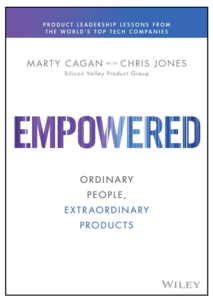Introduction
User stories are a crucial tool for product managers to effectively manage and communicate requirements in the development process. In this blog post, we will explore the art of writing user stories and the key factors that contribute to their effectiveness. By understanding the importance of user stories and mastering the techniques for their creation, product managers can ensure the successful delivery of products that meet user needs and expectations.
What are User Stories?
User stories serve as concise, yet powerful narratives that capture the essence of a user’s interaction with a product or feature. They are short statements written from the perspective of the end-user and describe specific functionality or behavior that the user desires. User stories focus on the “what” and the “why” of a product, rather than the technical details of the implementation.
User stories follow a simple template that includes a role, goal, and benefit. For example, a user story could be: “As a customer, I want to be able to track my packages online, so I can know exactly when they will arrive.” This user story clearly defines the role of the user (customer), their goal (tracking packages online), and the benefit they seek (knowing the arrival time).
Importance of User Stories in Product Management
User stories play a crucial role in product management for several reasons:
- Understanding User Needs: User stories help product managers gain a deep understanding of user needs and pain points. By focusing on the user’s perspective, product managers can align their development efforts with user expectations, leading to greater customer satisfaction.
- Conducting User Research: User stories serve as a foundation for conducting user research. By defining the desired user behavior or functionality, product managers can gather valuable insights from users, allowing them to refine the user stories and improve the product.
- Gathering Requirements from Users: User stories provide a structured approach for gathering requirements from users. By breaking down the product into smaller, manageable pieces, product managers can effectively prioritize and plan their development efforts.
- Identifying Pain Points and Goals: User stories help product managers pinpoint the pain points and goals of users. By understanding the objectives and challenges of the target audience, product managers can address them proactively and deliver solutions that truly add value.
- Defining User Personas: User stories contribute to the creation of user personas, which are fictional representations of target users with specific characteristics, needs, and goals. User personas help product managers empathize with users and ensure that the product meets their unique requirements.
Creating User Personas
To write effective user stories, product managers must first develop user personas. User personas represent the characteristics, behaviors, and goals of different segments of users. By creating user personas, product managers can tailor user stories to specific user groups and deliver more personalized experiences.
Linking User Personas to User Stories
Once user personas are created, product managers can link them to user stories. By mapping user personas to user stories, product managers can clearly define which personas a particular user story addresses. This alignment helps ensure that the product serves the needs of all user groups and provides a comprehensive solution.
Tailoring User Stories to Different User Personas
Different user personas may have unique requirements and goals. Product managers must tailor user stories to address each persona’s specific needs. By doing so, product managers can create a product that meets the diverse needs of their user base, resulting in higher user satisfaction and adoption.
Prioritizing User Needs
Not all user needs are created equal, and product managers must prioritize them based on their importance and impact. Prioritization ensures that the most critical features are developed first, maximizing the value delivered to users.
Techniques for Prioritization
Product managers can employ various techniques to prioritize user needs, such as:
- MoSCoW Method: Categorize user needs as Must-Have, Should-Have, Could-Have, or Won’t-Have. This method helps in distinguishing essential requirements from less critical ones.
- Kano Model: Identify user needs as Basic, Performance, Excitement, or Indifferent. This model classifies user needs based on their impact on user satisfaction.
- Weighted Scoring: Assign weights to different user needs based on their importance and urgency. This technique helps in making more informed decisions when prioritizing requirements.
Importance of Prioritization in User Story Writing
Prioritizing user needs is critical for effective user story writing. By prioritizing, product managers ensure that the development efforts focus on the most valuable features, resulting in high-quality products that meet user expectations.
Factors to Consider when Prioritizing User Stories
When prioritizing user stories, product managers should consider the following factors:
- User Value: Evaluate the impact of a user story on user satisfaction and value.
- Business Value: Assess the contribution of a user story to business goals, revenue, or market differentiation.
- Technical Complexity: Consider the effort and complexity required for implementation.
- Dependencies: Take into account any dependencies between user stories and prioritize accordingly.
- Urgency: Determine the time sensitivity of a user story and its relevance to upcoming releases or deadlines.
Anatomy of a User Story
A well-defined user story follows a specific structure that includes the role, goal, benefit, and acceptance criteria.
Role, Goal, and Benefit
The role identifies the user interacting with the product, the goal represents what the user wants to achieve, and the benefit conveys the value the user seeks.
Acceptance Criteria
Acceptance criteria define the conditions that must be met for a user story to be considered complete. They provide clarity to the development team on the expected behavior and functionality. Acceptance criteria should be testable and measurable to ensure that the story objectives are achieved.
Examples of Well-defined Acceptance Criteria
To illustrate, let’s consider the previous example user story:
User Story: “As a customer, I want to be able to track my packages online, so I can know exactly when they will arrive.”
Well-defined Acceptance Criteria:
- The customer can log in to their account on the website.
- The customer can enter the package tracking number in the provided field.
- The system displays real-time updates on the package’s location and estimated arrival time.
- The customer receives email notifications for significant delivery updates.
User Story Format
Consistency in user story format enhances clarity and understanding among product managers, development teams, and stakeholders. Following a consistent format also ensures that user stories are easily prioritized, estimated, and implemented.
INVEST Criteria for User Stories
To create effective user stories, product managers can leverage the INVEST criteria:
- Independent: User stories should be self-contained and independent of other stories.
- Negotiable: User stories should be open for discussion and refinement.
- Valuable: User stories should deliver value to the end user.
- Estimable: User stories should be estimable, allowing the development team to assess effort and complexity.
- Small: User stories should be small enough to be completed within one iteration or sprint.
- Testable: User stories should have clear acceptance criteria that enable testing.
Splitting User Stories for Clarity and Simplicity
Sometimes, user stories can become too complex or large to handle efficiently. In such cases, splitting a user story into smaller, more manageable stories is necessary. Splitting can help improve clarity, simplify implementation, and enable progress tracking.
Techniques for Effective User Story Writing
To enhance the effectiveness of user story writing, product managers can leverage the following techniques:
User Story Mapping: User story mapping is a visual technique that helps product managers organize user stories into a coherent narrative. It provides a holistic view of the product’s functionality and helps identify gaps or inconsistencies.
Story Writing Workshops: These workshops bring together cross-functional teams to collaboratively create and refine user stories. Involving diverse perspectives ensures that all aspects of the product are considered and leads to more comprehensive user stories.
Prototyping User Stories: Prototyping user stories allows product managers to validate and refine their ideas before development. Prototypes provide a tangible representation of the user experience, enabling stakeholders to provide feedback and make informed decisions.
Best Practices for User Story Refinement: Continuous refinement and iteration are essential for user story success. Product managers should actively seek feedback, balance flexibility with rigidity, and conduct regular user story reviews to ensure continuous improvement.
Estimating Complexity and Effort
Estimating user stories accurately is crucial for effective planning and resource allocation. Product managers can employ various techniques for estimating complexity and effort, such as planning poker, t-shirt sizing, or relative ranking.
Collaborative Techniques for Estimation
Collaborative estimation techniques involve the whole team in estimating user stories. By pooling their expertise and experience, team members can provide more accurate and reliable estimates. Techniques like planning poker or affinity estimating foster collaborative decision-making and create a shared understanding of the work complexity.
Continuous Refinement and Iteration
User stories are not set in stone; they evolve over time as new information emerges or user needs change. Product managers should embrace continuous refinement and iteration, incorporating feedback and adapting user stories to deliver the best possible product.
User Story Reviews and Feedback
Conducting regular user story reviews is essential to ensure their quality and alignment with user needs. Product managers should actively seek feedback from stakeholders, development teams, and end users. Incorporating feedback into user story updates ensures that the product meets evolving expectations.
Examples of User Stories
User stories are concise, informal descriptions of a feature or functionality from the perspective of an end user. They typically follow a simple template: “As a [type of user], I want [goal or objective], so that [reason or benefit].”
Here are some examples of user stories I have compiled across different domains, to get you all started:
- E-commerce Website:
- User Story: As a registered user, I want to be able to save items to my wishlist, so that I can easily find and purchase them later.
- Social Media Platform:
- User Story: As a user, I want to be able to upload multiple photos in a single post, so that I can share more content with my friends at once.
- Project Management Tool:
- User Story: As a project manager, I want to be able to assign tasks to specific team members, so that everyone knows their responsibilities and deadlines.
- Fitness Tracking App:
- User Story: As a user, I want to receive personalized workout recommendations based on my fitness goals and preferences, so that I can stay motivated and make progress.
- Food Delivery Service:
- User Story: As a customer, I want to be able to track the status of my order in real-time, so that I know when to expect my delivery.
- Online Learning Platform:
- User Story: As a student, I want to be able to bookmark important sections of the course materials, so that I can easily revisit them for review.
- Travel Booking Website:
- User Story: As a traveler, I want to be able to filter search results by price, duration, and other criteria, so that I can find the best travel options for my preferences and budget.
- Smart Home Device:
- User Story: As a homeowner, I want to be able to schedule automated lighting and thermostat settings, so that I can save energy and customize my home environment.
- Banking Mobile App:
- User Story: As a customer, I want to be able to deposit checks using my smartphone camera, so that I can conveniently manage my finances without visiting a branch.
- Customer Support Software:
- User Story: As a support agent, I want to be able to view a customer’s purchase history and previous interactions, so that I can provide personalized assistance and resolve issues more efficiently.
User stories serve as a foundation for product development, guiding the creation of features and functionalities that address specific user needs and goals. They help ensure that the product team remains focused on delivering value to users and solving real-world problems effectively.
Examples of User Stories with Acceptance Criteria
Acceptance criteria are specific conditions or criteria that must be met for a user story to be considered complete and ready for implementation. Here are sample acceptance criteria for the user stories I have mentioned earlier:
- E-commerce Website:
- User Story: As a registered user, I want to be able to save items to my wishlist, so that I can easily find and purchase them later.
- Acceptance Criteria:
- User can add items to their wishlist from product detail pages.
- User can view their wishlist on their account dashboard.
- User can remove items from their wishlist.
- Wishlist items persist across sessions for registered users.
- Fitness App:
- User Story: As a user, I want to be able to upload multiple photos in a single post, so that I can share more content with my friends at once.
- Acceptance Criteria:
- User can select multiple photos from their device’s gallery.
- User can preview selected photos before posting.
- User can add captions or descriptions to each photo.
- Multiple photos are displayed in a single post when shared.
- Project Management Tool:
- User Story: As a project manager, I want to be able to assign tasks to specific team members, so that everyone knows their responsibilities and deadlines.
- Acceptance Criteria:
- Project manager can assign tasks to individual team members.
- Assigned tasks are visible to the assigned team members.
- Team members receive notifications about newly assigned tasks.
- Assigned tasks include due dates and priority levels.
- Food Delivery Service:
- User Story: As a customer, I want to be able to track the status of my order in real-time, so that I know when to expect my delivery.
- Acceptance Criteria:
- Customer can view the current status of their order (e.g., preparing, on the way, delivered).
- Order status updates automatically in real-time.
- Customer receives notifications about order status changes.
- Estimated delivery time is provided based on order status.
- Online Learning Platform:
- User Story: As a student, I want to be able to bookmark important sections of the course materials, so that I can easily revisit them for review.
- Acceptance Criteria:
- Student can bookmark specific sections or pages within course materials.
- Bookmarked sections are saved and accessible from the student’s account.
- Student can easily navigate to bookmarked sections for quick access.
- Bookmarks are synced across devices for logged-in students.
These acceptance criteria provide clear and measurable guidelines for implementing and testing each user story, ensuring that the resulting features meet the expectations of users and stakeholders.
Conclusion
In conclusion, writing effective user stories is an art that product managers must master to deliver successful products. User stories serve as powerful tools for understanding user needs, prioritizing requirements, and guiding the development process. By following best practices and leveraging collaborative techniques, product managers can empower themselves with the skills to create compelling user stories that drive product success.
Key Takeaways for Effective User Story Writing
- User stories are concise narratives representing user needs and desires.
- User stories are crucial for understanding user needs, conducting user research, and gathering requirements.
- User personas help tailor user stories to specific user groups and enhance personalization.
- Prioritizing user needs is essential for effective user story writing.
- Well-defined user stories consist of a role, goal, benefit, and acceptance criteria.
- Consistent formatting, following the INVEST criteria, and splitting complex user stories improve effectiveness.
- Techniques like user story mapping, story writing workshops, and prototyping enhance user story writing.
- Continuous refinement, estimation, and feedback incorporation are crucial for user story success.
Frequently Asked Questions (FAQs)
What is the difference between a user story and a requirement?
User stories focus on the user’s perspective and describe desired functionality or behavior, while requirements often include technical details and specifications.
How many user stories should be included in a product backlog?
There is no fixed number of user stories for a product backlog. The number may vary depending on the product’s complexity, scope, and development timeline.
Can user stories be modified or added during the development process?
Yes, user stories can be modified or added during the development process as new information emerges or user needs change. Agile methodologies emphasize adaptability and continuous improvement.
How can user stories be effectively used in an agile development environment?
User stories are a fundamental component of agile development as they provide a clear and concise way to communicate requirements and align development efforts with user needs. They facilitate collaboration, prioritization, and iterative development.
What role does a product manager play in user story writing and refinement?
Product managers are responsible for creating, refining, and prioritizing the backlog (Epics & user stories). They gather feedback, ensure alignment with user needs, and collaborate with cross-functional teams to deliver successful products. The product manager’s involvement throughout the user story writing process is crucial for its effectiveness.



